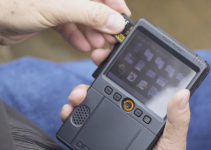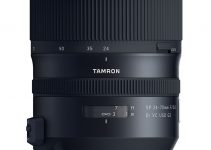ARRI just dropped their next-generation Super 35mm camera – the ALEXA 35. This is a huge deal.
The biggest news of this launch is that ARRI is using the ALEV IV image sensor, which is the first new sensor tech the company has used in over a decade and, believe it or not, brings the system into native 4K capture.
Beyond that, there are plenty of other advancements that make this release incredibly exciting for cinematographers.
There is a lot to unpack with any camera launch, but this is one of the bigger ones. If you want to take a look at the ALEXA 35, the guys at CVP put together an incredibly detailed video.
Improving on one of the best cameras of the decade is no easy feat. It has taken years of development to get to this point and one of the most important aspects is making something new that still looks like an ARRI camera.
Imaging Technology Updates
Getting that image looking as good as it does requires a lot of different technologies working together. The ALEV sensor used in the ALEXA series is the core of that tech and has proven itself. An interesting angle ARRI has always taken is that they didn’t need 4K (the ALEV III was only 2.8K). Bigger pixels deliver better image quality.
Hard to argue with ARRI’s results there. With the ALEXA 35 they had to make sure that if they were pushing the resolution up to 4.6K that they weren’t losing anything in the process. It also seems necessary in an age where many streaming services are demanding 4K acquisition.
It seems they finally found their sensor. The 4.6K Super 35mm ALEV IV (3:2 Open Gate: 4608 x 3164) offers that upgraded resolution and still improves performance across the board. The upgraded processes helps with that and the sensor has a new OLPF stack.
ARRI does do factory calibrations, called the Advanced Color Match (ACM) process, as well to guarantee that anyone using one knows exactly what they are gonna get. This process allows ARRI to go in and change the white balance of the sensor internally, something that wasn’t truly possible before.
ARRI managed to get more dynamic range out of this sensor, pushing up to 17+ stops.
One great change for everyone is that all the shooting modes, including anamorphic and high frame rates, are going to be available with the stock license. Those anamorphic modes are going to hit the necessary specs asked by streamers like Netflix as the 3.3K image still exceeds the total pixel count of a UHD 4K image.
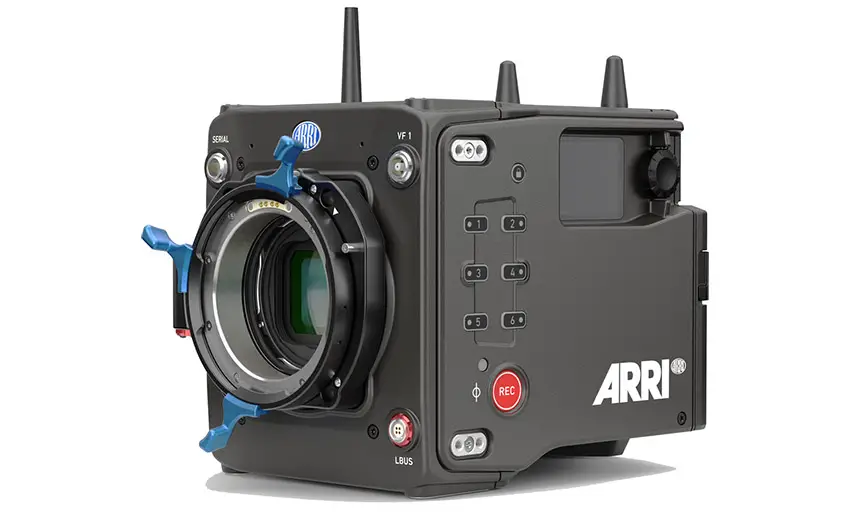
Image Credit: ARRI
REVEAL Color Science
Color was a key focus of the ALEXA 35 and resulting in the development of REVEAL Color Science. That name comes from ARRI’s desire to show more of what the camera can actually capture. REVEAL has a new process chain to ensure cinematographers demands are met.
It starts with the ADA-7 debayer algorithm, heads through the ACE4 color engine and ARRI Wide Gamut color space, gets processed through a LogC4 curve, and then there is an updated set of LUTs to get into a display-ready format. The result is more natural color reproduction and pleasing skin tones.
AWG4 is the latest ARRI Wide Gamut color space. It actually exceeds Rec.2020 by a small amount to provide post with more flexibility without ending up with colors that are too far off the visible spectrum.
REVEAL is baked into any internal recording options, like ProRes, as well as the viewfinder image, SDI out, and frame grabs. For ARRIRAW you will have to use a dedicated program that ARRI developed for processing through their REVEAL system and giving users a bit more control.
The best part is that this new software can work with raw footage from the current generation of ALEXA cameras so that in multi-cam setups you can ensure everything matches up.
Even compared to the ALEXA Mini and ALEXA Mini LF you can see improvements to color. They call out better accuracy as well as more natural-looking skin tones. The occasional pink and green shifts appear to be gone.
The debayer algorithm that runs inside the ALEXA 35 offers some more generalized benefits in creating the RGB image data. However, one specific improvement was in creating cleaner edges, something you might be interesting in for green or blue screen work.
Dynamic Range
While the dynamic range rating is based on more technical analysis and not real-world testing it can be easy to ignore the 17+ stops figure. ARRI has traditional been more conservative than other manufacturers and the current ALEXA Mini LF only ever claimed to be 14+ stops. That means ARRI is calling the ALEV IV a whole 3 stops better than the older sensor.
This upgraded sensor does have some shifts in functionality thanks to this wider dynamic range and improved Dual Gain architecture. For even distribution of the dynamic range you’ll need to shoot at EI 400 – compared to 800 for the last gen.
Moving up to 800 will give you a stop extra in the highlights and one less in the shadows. Though, to make things easier, ARRI is still sticking with EI 800 for their general recommendation.
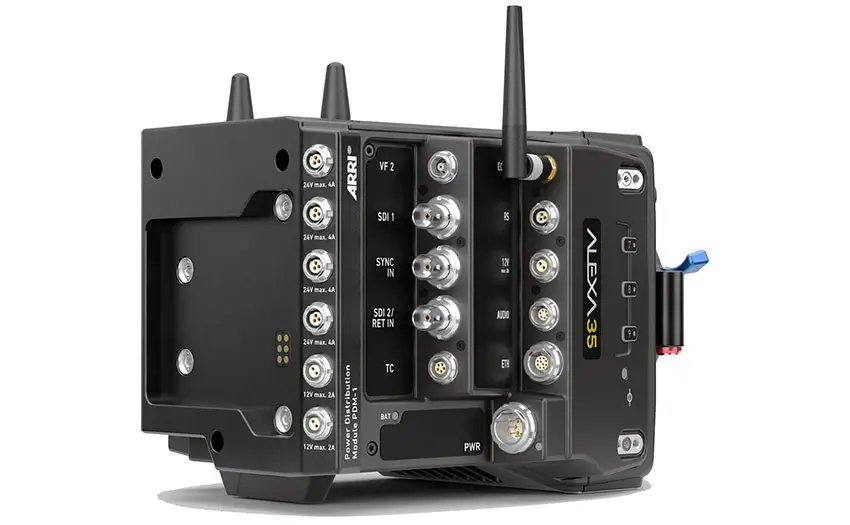
Image Credit: ARRI
To make use of that extra dynamic range ARRI needed to update the log curve. That is how we got LogC4. This profile is a lot flatter than LogC3. A lot flatter. It also shifts the middle gray down to about 28% IRE. This will take some adjustment for colorists, but the new LUTs should help with the new footage.
Running through a quick test and comparison for dynamic range proves that the ALEXA 35 is able to hold on to tons more information compared to the older ALEXAs. Overexposure is incredibly well handled. Under exposure is also very well handled.
Another improvement in the ALEXA 35 has been to stray light suppression. By eliminating any stray light hitting the sensor you can capture an image with deeper blacks and better contrast. Some of this work is performed in camera, though one of the more important parts are the newly designed mounts. ARRI has a ton of options:
- ARRI LPL (LBUS)
- ARRI PL-to-LPL Adapter
- ARRI EF (LBUS)
- ARRI PL (LBUS)
- ARRI PL (Hirose)
Formats and Storage
One thing you won’t be missing are recording formats. The ALEXA 35 offers 19 different options. For codecs you then have ProRes (422 HQ, 4444, 4444 XQ) and ARRIRAW internally.
You will be capturing and storing a lot of data. ARRIRAW in particular is uncompressed and there aren’t options for adding compression or adjusting file size in any way. It is going to be the best quality still as the camera does 18-bit linear processing and produces either a 13-bit log ARRIRAW file or a 12-bit LogC4 ProRes recording.
ARRI provides a lot of flexibility on resolutions and recording modes. Users will be able to work with different sensor areas and resolutions as well as perform proper downsampling for working with ProRes files for faster delivery.
Textures
Textures are a new setting in the ALEXA 35 which appears to offer some more creative looks for your images. Previously, the texture settings were locked down by ARRI for what they believed would produce the best results. These new profiles will change the amount and character of grain as well as the contrast at different levels of detail. This is going to require a fair bit of testing since these will be baked into your ProRes files. If you want to avoid any accidental use of textures you can actually delete them from the camera.
ARRI has taken care to deliver options for a range of productions. Whether you have all the time and budget in the world and want to fine tune images later using raw or have some constraints that make using built-in textures and processing to get your image closer to the final look right away.
Low-Light Performance
As mentioned earlier, despite the higher resolution of the sensor it should have less noise than previous cameras. Naturally, the noise will be finer since the resolution is higher. It also has more natural-looking luma noise than chroma noise. The original ALEXA Mini could only hit EI 3200. The ALEXA 35 can hit 6400.
A new Enhanced Sensitivity mode is available from EI 2560 up to 6400 and will help reduce noise in your image. It works by capturing a dark frame between each real frame and applying smart noise reduction. You will have some options, like frame rates and shutter angles, in this mode. The benefits do seem to be worth it.
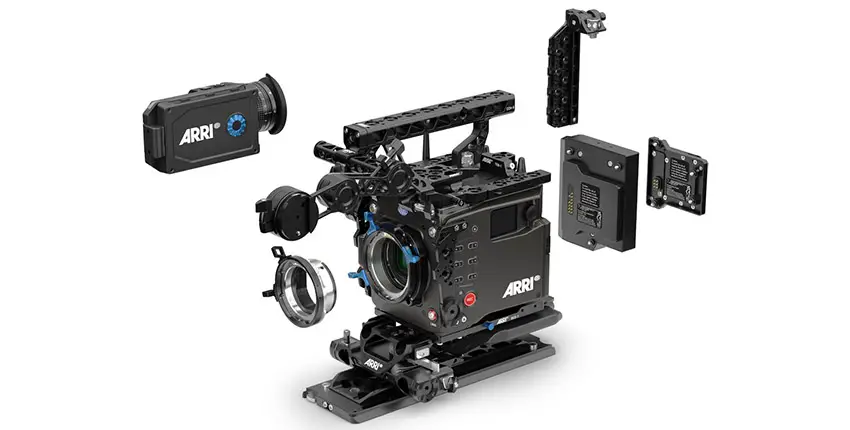
Image Credit: ARRI
General Sensor Info
Similar to older cameras, the ALEXA 35 does not need user black balancing. An internal system maintains the temperature to keep consistent performance across a wide range of environmental conditions. For things like hot pixels there is a mapping method that can be used to clean it up.
An updated cooling core takes in cool air from the bottom of the camera and has a fan at top to move the hot air away. It should both improve cooling and help with weather resistance. Users do have some fan control options to minimize noise during recording.
Built-in ND filters are of course an option here. The system is similar to before with clear, 0.6, 1.2, and 1.8 settings. The mechanism is faster here which is nice.
Rolling shutter is okay. It appears very similar to the original Mini. Not so much to be a problem, but there is potential for some jello on fast panning shots.
Why Super 35?
One question people may have is why ARRI would go Super 35mm when many in the industry have moved to large-format. RED’s V-RAPTOR VV and Sony’s VENICE 2 are good examples. Well, Super 35mm does have a look that some people prefer and there are many more lens options available for the system. Zooms in particular have not yet caught up for the full-frame market.
An interesting tidbit is that an LF version, if even possible since the new sensor design does have some physical limitations, is a long while off.
Updated Workflow Apps
Software has been updated with ARRI consolidating many features into a single app for streamlined workflows. The ARRI Reference Tool now contains the same functionality as the ARRI Color Tool, ARRIRAW Converter, and ARRI Meta Extract.
The other piece of software is the ARRIRAW HDE Transcoder to help reduce the file sizes of ARRIRAW files. Updates for the critical post-production tools are on the way and should be ready by the time the camera is available.
LUTs are getting a slight rework. The new ALF4 files now only contain the creative decisions instead of both creative intent and the display color space conversion. This means that users can use their looks with any standard LogC4 LUT to work with any display color space. Cinematographers can use this to create a look that can be easily carried through into post.
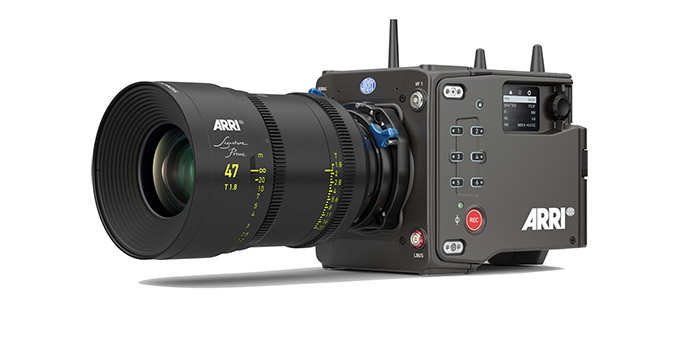
Image Credit: ARRI
Media Options
Media is the same type of Codex drive used with the ALEXA Mini LF. New is the 2TB option which has the added speed to handle the faster frame rates and higher resolutions. The 1TB maxes out in ARRIRAW at 35 fps for 3:2 Open Gate 4.6K and 55 fps for 4K 16:9 and 3.3K 6:5 anamorphic.
The 2TB will get open gate recording up to 75 fps, the 4K 16:9 mode up to 120 fps, and anamorphic at 100 fps. ProRes works flawlessly with either drive size.
Audio
A 6-pin LEMO input is still around for audio accessories. ARRI also has a new AEM-1 2-channel audio module for adding various I/O, including a couple mini-XLR jacks and some power outputs. Two microphones are available on the front of the body for scratch tracks.
Power
All these improvements will require some extra juice out of the battery and the ALEXA 35 is now a 24V system. It is necessary to push the processing as far as they need and will help ensure that accessories are getting the power they need. B-mount is the standard and one that ARRI has been pushing recently. Adapters are available for other powering options.
B-mount is an improvement over older V-mount batteries. The locking mechanism is much more secure and the standard is dual voltage so it can work with 12V devices as well. It also passes metadata. A cool example is the ability to stack batteries and get the battery levels of each pack. Hot swapping becomes easy with that configuration as well.
Physical Design
This is a completely new and modern design. It is solid and scratch-resistant. It is reminiscent of the original, full-size ALEXA instead of the carbon fiber of the Mini. Individual panels can even be replaced, which should make repairs cheaper for a camera that is likely to be put through its paces.
ARRI is making the claim that the design has no compromises when it comes to quality and durability. Not that the Minis are bad, they just had to trim down in paces to get the size and weight to the “Mini” version. It’s small, but it is designed to work in full productions.
It comes with LPL as standard, though there are interchangeable mounts as we discussed earlier. The sensor is centered from the top and bottom which makes it easier to mount things like matte boxes from either the top or bottom via appropriate rigging.
The EVF is the same as the one from the Mini LF. Absolutely no complaints there. One addition is a new 500-nit HDR viewing mode.
At the rear you will find a space for mounting the B-mount battery plate. It’s a surprisingly compact adapter plate to add. Outside of that are three other mounting points to work with various modules that are available. Right now that includes a power distribution plate and an audio extension module.
The top has the big output for the fan. Around that are ports for attaching the easily replaced Wi-Fi antennas and other points for attaching your top plate. There are some pins for as of yet unnamed future accessories. These are fully weatherproof so they don’t even need to be covered.
On the left side of the camera is where you will find the key display. It shows off the menu and essential settings for operators and the camera department. Some custom buttons are available with practically every option you could want.
The other side has a massive set of I/O. Basically, all the essential ports for production will be there. SDI, Genlock, power, etc. There’s plenty.
Packages
At launch there are going to be a couple options.
- Lightweight Set: A more stripped back set designed for run-and-gun configurations. The new top handle is lightweight and durable with EVF mounting. A bracket is available for stabilizing rigs. There is a baseplate as well.
- Production Set: Designed for a more traditional camera department. Similar quick release rigging to ALEXA Mini LF. New side brackets and top plates which can be used independently. New EVF bracket with extra flexibility.
There are an endless number of options when it comes to rigging.
ARRI seems to have nailed it with the ALEXA 35. It truly feels like a next-generation camera system from the much lauded company. This is only scratching the surface so if you are interested you should definitely watch the full video.
What do you think about the ALEXA 35?
[source: CVP]
Order Links:
- ARRI ALEXA 35 Cinema Camera (B&H)
- ARRI ALEXA 35 Cinema Camera Lightweight Set (B&H)
- ARRI ALEXA 35 Cinema Camera 15mm Production Set (B&H)
- ARRI ALEXA 35 Cinema Camera 19mm Production Set (B&H)
Disclaimer: As an Amazon Associate partner and participant in B&H and Adorama Affiliate programmes, we earn a small comission from each purchase made through the affiliate links listed above at no additional cost to you.
Claim your copy of DAVINCI RESOLVE - SIMPLIFIED COURSE with 50% off! Get Instant Access!



